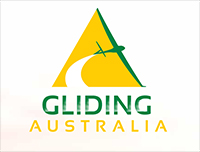pdf Gfa 067an Popular
By Tim Shirley Tagged in G103CTwinIIISL, G103TwinII, G103TwinIIAcro, TwinAstir 1168 downloads
gfa_067an.pdf

MISCELLANEOUS AIRWORTHINESS INFORMATION - TWIN ASTIR, G103 TWIN II & ACRO, G103 TWIN III SL
1. Loose control column grip. A pilot suffered PIO just after takeoff on aerotow. The grip was pulled upwards and came off the control column. This caused momentary loss of control and a minor impact with the ground. Check at both daily and annual inspections. 2. Hinge roll pin removal. The most common method of removing the ailerons and elevators is by use of a hammer and pin punch. This type of impact can be quite damaging to the hinge and its attachment to the main structure. The following sketches have been offered by one of our inspectors as an alternative tool for roll pin removal, which does the job quite well and may prevent delamination of hinge attachments. (See GFA AD 213.) The main problem is that the holes in the pins are individually drilled and are at all sorts of angles, hence the curved arch of the tool and the bolt in the trunnion so that the individual roll pin angle can be duplicated by the tool. A secondary problem is that not all the hinge pins are the same length so that the tool-must cater for differing spans of hinge. The feet of the tool must slip and hold under the different sized ends of the pins. One foot of the tool (the foot in the handle) has to be loose so that it can be inserted below the end of the hinge pin first and then the main body of the tool presented to it, the foot then being secured to the body by a pin (a bent nail in the prototype). It is fiddly as the aileron/elevator also has to be held at the correct angle so that the roll pin being removed does not pierce the control surface shell. Once the roll pin is moving it slides out very easily.

